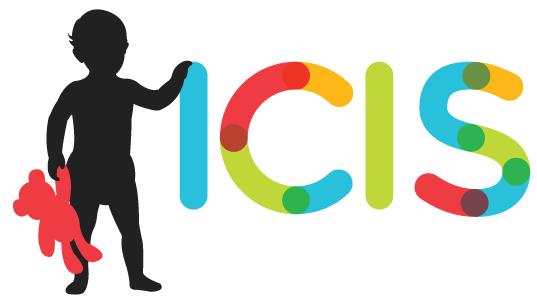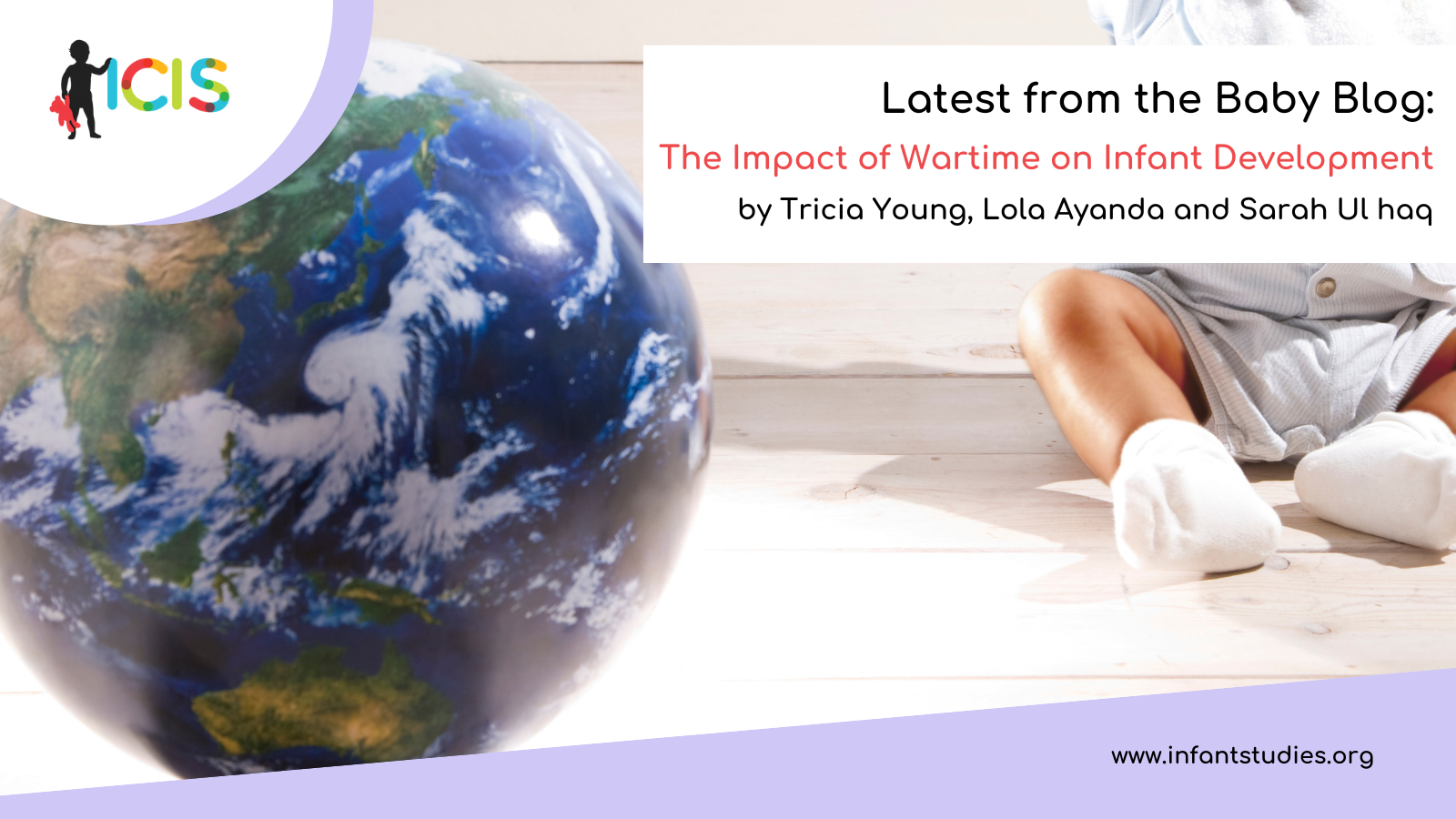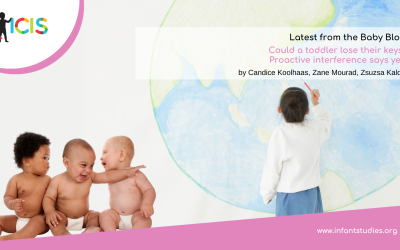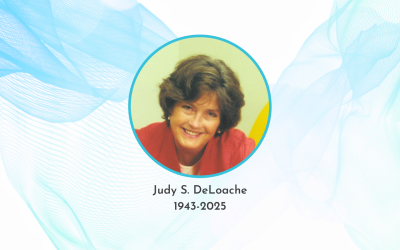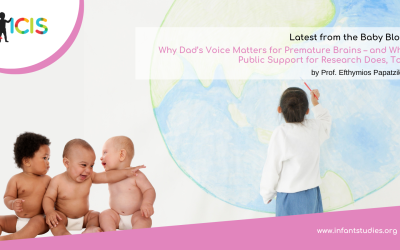Introduction
In 2017, 535 million children (one quarter) of the world’s children lived in countries affected by armed conflict, violence, disaster and/or chronic crisis.[1] In 2018, over 29 million babies were born in conflict-affected areas, starting their lives in unstable and dangerous environments[2]. In 2022, approximately 468 million children (18.8%) were living in conflict zones, with about two in six living less than 50 km away from where actual fighting was taking place, a 2.8% increase from the year before.[3] The current situation is projected to escalate. By 2030, it is estimated that almost 60% of the world’s extreme poor will live in countries affected by fragility, violence and conflict.[4]
Conflicts have devastating consequences for civilian populations but especially for infants and young children: an estimated 300 babies are killed each day with approximately 100,000 infant deaths each year attributed to the effects of conflict. Between 2013-2017, at least 550,000 infants likely died due to the indirect impacts of conflict in the ten worst-affected countries.[5] Disruption of essential services like healthcare, clean water, and nutrition can be deadly for babies. Conflict often forces displacement, separating families and interrupting breastfeeding and early childhood care. Stress and trauma experienced by parents in conflict zones can negatively impact infant development.[6]
Recognising the long-term developmental consequences of early war exposure for individuals and societies provides a powerful rationale for prioritising infant and young children’s protection in conflict zones. A nuanced understanding of the effects of war on infants can lead to more informed policy on conflict prevention, humanitarian aid, and post-conflict recovery efforts, helping to shape decisions around resource allocation, program design, and policy priorities to better safeguard the developmental potential of the most vulnerable. Additionally, this knowledge can inform approaches to post-conflict healing and reconciliation by highlighting the need to address the developmental legacy of war across generations.[7]
Effects of War on Infant Development
War profoundly impacts infants’ motor, cognitive, and socioemotional development during a crucial period of rapid brain growth and plasticity. Exposure to violence, displacement, malnutrition, and lack of adequate medical care can impair physical growth. Disruption of vaccination programs leaves infants vulnerable to preventable diseases. The unpredictable and frightening nature of war creates an environment of fear, unpredictability, and deprivation. Such chronic stress can have profound neurobiological effects, negatively affecting brain development and potentially leading to difficulties with attention, learning, and emotional regulation later in life[8] [9]
War can disrupt the stable, secure attachments infants need to develop trust and healthy relationships. Separation from caregivers, witnessing violence, and living in a state of hypervigilance can lead to attachment disorders and long-term challenges with emotional regulation and social functioning. Given their total dependence, infants are susceptible to their caregivers’ emotional states and the effects of war trauma can be passed down to infants through their caregivers’ mental health and parenting. The trauma and stress experienced by mothers living in war zones can lead to maternal mental health issues like depression and PTSD; a depressed or traumatised mother may struggle to provide responsive, nurturing care that supports optimal development.[10].
While some infants show remarkable resilience, war exposure in early life is associated with higher rates of mental health issues across the lifecycle and developmental delays that can persist well beyond childhood.[11] Post-traumatic stress disorder (PTSD) and depression are the most common mental health disorders in children affected by war. Studies have found prevalence rates of 22.7% for PTSD, 13.8% for depression, and 15.8% for anxiety disorders in refugee and asylum-seeking children and adolescents.[12] Studies have shown that children of war-traumatized parents are at higher risk for emotional and behavioural problems.[13]
Resilience and Protective Factors
It is evident that the effects of war on infants and young children can have complex and harmful impacts. However research suggests that, with proper support and interventions designed to support resilience and early childhood psychological development, the long-lasting effects of trauma can be mitigated and infants and young children can overcome some of the negative impacts of war exposure. A focus on resilience ‘emphasises war-affected children’s ability to cope with, adapt to, and navigate complex environments that are saturated with adversity’[14] and can support their future development. The evidence suggests that the recovery trajectory for children who have experienced trauma is not significantly affected by the trauma itself.[15]
A child’s ability to cope with and adapt to complex environments as a result of war, violence, and displacement is influenced by individual and community-based factors. Ensuring safety, stability, and nurturing caregiving relationships in the aftermath of conflict is critical for promoting healthy development and mitigating long-term consequences.
At the personal level, protective factors include healthy (and strong) attachment to parental figures and family members, self-regulation and cognitive skills development, agency and self-efficacy, and cultural adaptability.[16] At the community level, protective factors include spaces such as schools, childcare facilities, and other safe environments for children to play and learn, as these promote structure in a child’s life, and enable social interaction with peers, which is important for child development. Lessons from practitioners in the field further reinforce protective factors such as supportive and loving caregivers, safety and a lack of violence within the family unit, and child-focused programming that sees children as active agents of their well-being as critical to supporting children’s resilience after exposure to war.[17]
To support the cognitive and social development of infants and young children affected by conflict and war, there is a need for interventions that support the caregiving relationship, establish safety and normalcy, encourage community, and emphasise playing, learning, and positive engagement with peers and community members. Recognising that this is a significant challenge, as war often causes the destruction of communities and results in displacement, there is a need to consider interventions and approaches that provide opportunities for young children and infants to thrive, even in temporary living arrangements or emergencies. Infants and children can achieve their potential through a focus on providing nurturing care, including good health, adequate nutrition, responsive caregiving, security and safety, and opportunities for early learning.
When considering the earlier identified resilience and protective factors to foster infant development during wartime, ECD programmes in humanitarian settings can take two complementary forms: child-facing programmes that promote nurturing environments for their care, learning, and psychosocial development and parent or caregiver-facing programmes that enhance their ability to care for their children through the provision of direct support (financial and psycho-social).[18]
Research and Practice Gaps
There is a growing evidence base of approaches and methods which can yield positive results and outcomes for programme participants once they reach a point of stability. However, there remains a need to more clearly define the outcomes—the longer-term results of interventions—which can appropriately, in culturally and contextually specific ways, indicate the effectiveness of interventions for infants and caregivers.
Further research, evaluation, and adaptive management of programmes designed to promote resilience and enhance protective factors is critically needed to ensure that we can meet the needs of affected populations. At the same time, we need to build evidence of what works as this is urgently needed by programme developers, practitioners, and policy-makers. There should be a stronger emphasis on evidence and learning that originates from the field and is generated by researchers from affected populations. This would contribute to a more nuanced understanding of the issues and their contexts.[19] The Moving Minds Alliance has established a Research Forum to support this urgent priority.
By leveraging the power of locally-led research and combining it with tools and techniques for programme development and policy, practitioners and researchers can best understand and deliver support to those most in need. Ultimately, research, policy, and programmes can most effectively respond and deliver outcomes for infants and caregivers in war zones by placing the infant and parent or caregiver at the centre. Actively centring their voices and perspectives and supporting their agency is key to unlocking resilience to ensuring that programmes and policy are geared towards long-term outcomes and not just survival.
Conclusion
The devastating effects of war extend far beyond the immediate destruction of infrastructure and loss of life. As we have explored here, the impact on infant development in conflict zones is profound and far-reaching, with potential consequences across the life-cycle and even across generations. The critical and urgent need for targeted interventions to support infant development in war-affected areas cannot be overstated.
Maternal mental health and the quality of mother-infant interactions emerge as crucial factors in mitigating the negative impacts of war on infants. In the face of extreme adversity, the nurturing bond between a mother and her child can be a powerful protective shield, fostering resilience and promoting healthy development. However, this protective capacity is often compromised by the severe stress and trauma experienced by mothers in conflict settings.
To address these challenges effectively, we urge policymakers, researchers, and practitioners to prioritise infant development in conflict settings. This includes:
- Implementing comprehensive support programs for expectant and new mothers in war-affected areas, focusing on both physical and mental health.
- Developing and scaling up interventions that promote positive mother-infant interactions and secure attachment in challenging environments.
- Allocating resources for long-term research on the developmental trajectories of infants exposed to war to inform evidence-based interventions.
- Integrating holistic infant development and nurturing care into humanitarian aid and post-conflict reconstruction efforts. Protecting infants and young children is fundamental to conflict resolution and peace-building initiatives.
By recognising the unique vulnerability of infants in wartime and taking decisive action to support their development, we can help break the cycle of trauma and build more resilient future generations. The stakes are high, and the time to act is now. Each infant, regardless of the circumstances of their birth, deserves the chance to thrive and reach their full potential.
[1] https://www.unicef.org/media/96586/file/Programme-Framework-Fragile-Contexts.pdf
[2] 29 million babies born into conflict in 2018 (unicef.org)
[3] Children Affected by Armed Conflict, 1990–2022 – World | ReliefWeb
[4] https://www.worldbank.org/en/topic/fragilityconflictviolence/overview
[5] Conflict kills 300 children every day (savethechildren.org.uk)
[6] Interparental Conflict and Infants’ Behavior Problems: The Mediating Role of Maternal Sensitivity – PMC (nih.gov)
[7] War trauma and infant motor, cognitive, and socioemotional development: Maternal mental health and dyadic interaction as explanatory processes – PubMed (nih.gov)
[8]The War On Children (savethechildren.org.uk)
[9] War trauma and infant motor, cognitive, and socioemotional development: Maternal mental health and dyadic interaction as explanatory processes – PubMed (nih.gov)
[10] Fazel, M., Reed, R. V., Panter-Brick, C., & Stein, A. (2012). Mental health of displaced and refugee children resettled in high-income countries: risk and protective factors. The Lancet, 379(9812), 266-282.
[11]Impact of war and forced displacement on children’s mental health—multilevel, needs-oriented, and trauma-informed approaches – PMC (nih.gov)
[12] Fazel, M., Reed, R. V., Panter-Brick, C., & Stein, A. (2012). Mental health of displaced and refugee children resettled in high-income countries: risk and protective factors. The Lancet, 379(9812), 266-282.
[13] Surviving is Just the Beginning: The Impact of Conflict on Children’s Mental Health | Save the Children International
[14] Meliani, F., Marliani, L., Pahlawanita, N. V., & Cahayaningtyas, A. (2024, February). Child development and resilience: exploring the dark side of war through the lens of children. In International Conference of Bunga Bangsa (Vol. 2, No. 1, pp. 990-1007).
[15] Hall, Ahmad, Nordenvig, and Gredeback. (2022). ‘Child development and resilience in war, conflict and displacement’ – Stockholm International Peace Research Institute.
[16] Masten, A. S., & Narayan, A. J. (2012). Child development in the context of disaster, war, and terrorism: Pathways of risk and resilience. Annual review of psychology, 63(1), 227-257.
[17] Jones L. (2019). Adversity and resilience: 10 lessons I have learnt from working with children in humanitarian emergencies. Archives of Disease in Childhood. 104, 833-836
[18] Early Childhood Development in Emergencies: Examples of ECDiE in Practice.
[19] Moving Minds Alliance. (2022). Research on Young Children in Emergencies: Current Evidence and New Directions.
Additional Materials
Existing Programs
Approaches designed to foster resilience and support protective factors can take many shapes and forms, and should be developed according to the particular context and the specific needs of participants. What early childhood development looks like in practice can range from life-saving, emergency support in crisis settings, to developmental support in non-crisis settings.
Programmes that seek to respond to early childhood development (particularly for infants) can look to these broad models of programming, recommended by practitioners and leaders in the early childhood development field:[1]
- Group-based activities for Child Wellbeing
Group-based activities for children of all ages, but especially for those between the ages of 0-2, are highly recommended as good practice for children’s wellbeing. By immersing children in age-appropriate spaces that are tailored and responsive to their individual needs, and that engage caregivers and community members to support a child’s wellbeing jointly, these programmes can encourage healthy, nurturing, and protective development for children.
- Trauma-informed care (TIC) and support
Trauma-informed care and support for children aged from 0-5 is predicated on understanding the impact of trauma on the brain, body, self, and community and intentionally builds resilience through the provision of targeted, needs-based support. Programmes incorporating a trauma-informed approach encourage safety, provide structure and predictability, and are predicated on building trust with all involved.
- Socio-ecological approaches to development and delivery
Socio-ecological approaches encourage programmes to address the influence of individuals, communities, and structures on the child, constituting a whole-picture view of what support may look like.
Child-facing programmes might include the creation and distribution of physical or digital learning and playing materials to encourage children’s cognitive and social development, for instance age-appropriate kits containing toys, flashcards, books, and other materials designed to engage children and support their learning. Incorporating child protection into child-facing programmes, other methods include creating and fostering safe playing and learning spaces using existing community infrastructure (such as buildings, homes, and secure outdoor spaces). Child-Friendly Spaces[2] provide a quick, effective, and highly adaptable programme model that serves the dual purpose of providing temporary child protection and transitional early recovery spaces for children affected by crisis and war. At the core of these interventions is a dedicated effort to mobilise communities about protecting and caring for child wellbeing – thus directly focusing on strengthening protection and promoting children’s resilience. While there are fewer documented programmes for effectively supporting infants, BRAC’s Humanitarian Play Labs[3] offer opportunities for play-based educational activities and psychosocial support for children aged 0-6. Such community-led and community-based child-facing programmes promote cognitive, psychological, and social development, offering infants and children the opportunities to grow and thrive in multiple ways.
Parent or caregiver-facing programmes to support infant development are typically designed to foster responsive caregiving through information sharing and skill-building, provision of direct parenting support (through in-person and digital means), financial support, and psychosocial support. Given the intergenerational effects of trauma on individuals and families, comprehensive programming that builds resilience in parents and caregivers is essential to ensuring the wellbeing of infants and their caregivers.
Examples of these include the UNICEF ECD Kit for Emergencies and the IRC’s ‘Jugar para Sonar’ backpacks. Within humanitarian or emergency settings, formal opportunities for learning may be limited; however, some examples of community-based programmes with refugee communities have proven successful, including Little Ripples in Chad led by iACT, Baytna in Greece by the Refugee Trauma Initiative,[4] Parenting on the Move led by Save the Children, and Reach Up and Learn. A comprehensive early childhood development programming guide developed by Play to Learn and Sesame Workshop can be found at this link.
[1] Moving Minds Alliance (2023). Child Protection for the youngest children affected by emergencies.
[2] Guidelines for Child Friendly Spaces in Emergencies, 2011.
[3] Mariam, E., Ahmad, J., & Sarah Sarwar, S. (2021). BRAC Humanitarian Play Lab Model: Promoting Healing. Learning and Development for Displaced Rohingya Children.
[4] Bouchane, K. (2018). Early childhood development and early learning for children in crisis and conflict.
About the Author

Tricia Young
Tricia brings 15+ years leadership in the international child rights sector. She was formerly the Director of a specialist child participation agency Child to Child; she Co-Chaired the BOND Child Rights Network for six years. As Director of Programmes at the Lumos Foundation, she managed a portfolio of initiatives focusing on strengthening child protection and welfare systems to prevent unnecessary family separation and ensure families receive the support they need to care for their children across diverse contexts. She led the humanitarian response in Ukraine & Moldova.

Lola Ayanda
Lola served as the Anti-Racist Storytelling Senior Specialist at ActionAid UK and Communications Coordinator at ActionAid Nigeria for six years. She was a member of ActionAid’s Emergency Fast Action Support Team (EFAST), deployed for Rapid Action Communications in Emergencies (RACE). She also served as the communications expert on the technical working group that evaluated ActionAid’s global COVID-19 response in real time. Previously, Lola worked as a Knowledge Management and Communications Officer at Mercy Corps. Lola holds a bachelor’s degree in Mass Communication, a master’s in Business Administration, and a master’s in Decolonisation and Social Justice from the University of West London.

Sarah Ul haq
Sarah Ul haq is a seasoned evaluation and learning specialist who brings over a decade of experience in monitoring and evaluation, knowledge management, impact measurement, and evidence building for international development to Moving Minds Alliance. Her focus areas include child protection, socio-economic strengthening, modern slavery, poverty reduction, and social enterprise development. Her educational background in Sociology (BA), Public Policy and Programme Evaluation (Diploma), and International Development with a focus on Poverty, Conflict, and Reconstruction (MSc).
